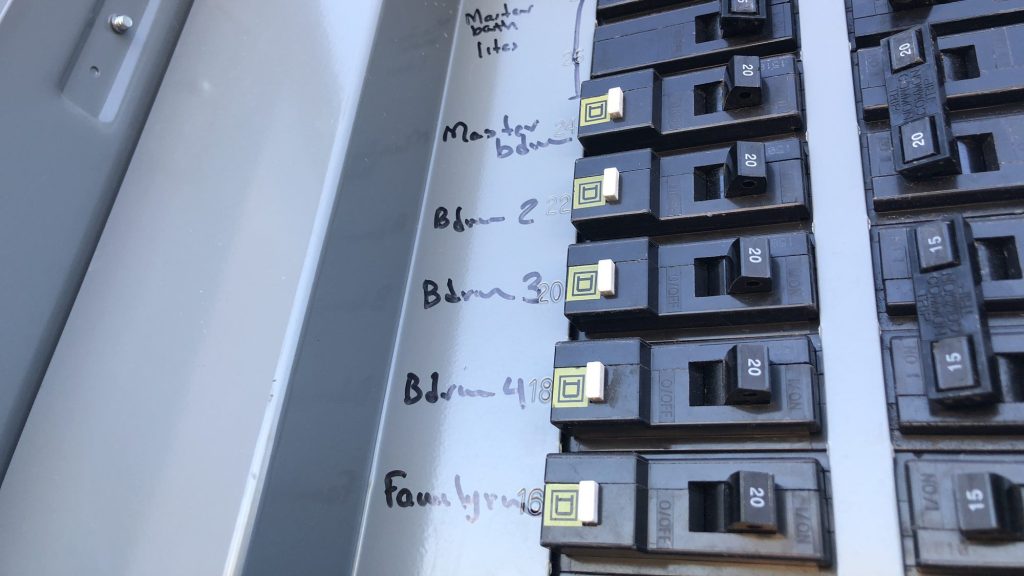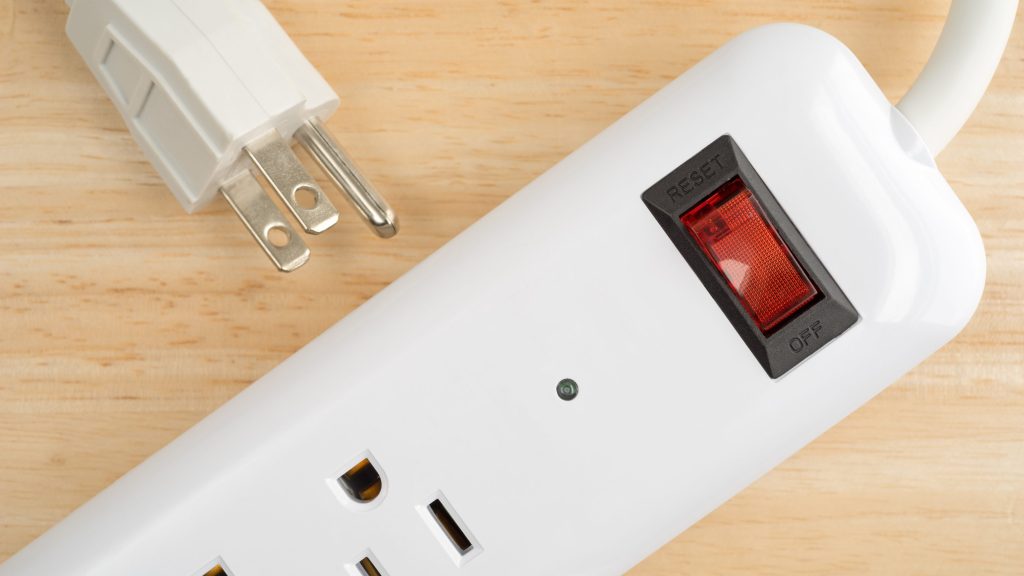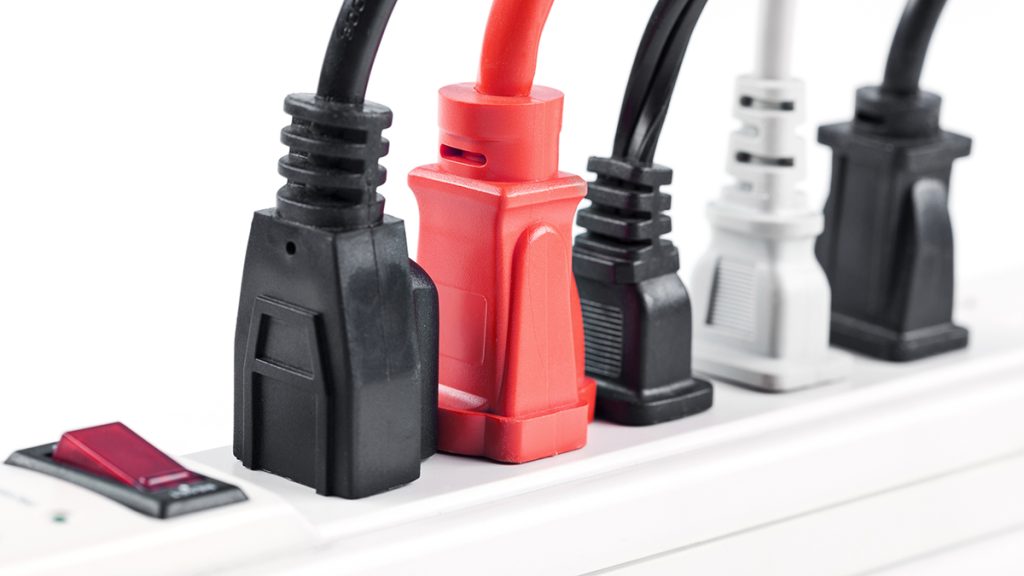We all have our limits, and the wiring in our buildings, computers, peripherals, and appliances is no different. Fortunately, devices exist to detect when those limits have been surpassed and protect against damage. Today we’ll look at two mechanisms: the circuit breaker and the surge protector.
Each of these devices works differently and does different things, so it’s important to note that the presence of just one or the other won’t offer the complete protection most offices need to keep wiring and electronic equipment protected from damage.
Circuit Breakers: Wiring Defenders
Any commercial or home electrical system that’s up to code features circuit breakers typically housed in wall-mounted panels known as fuse boxes (or breaker boxes) within utility spaces. These electrical switches protect electrical circuits from damage in the event of an overload (too much electrical current) or short circuit (when electricity flows along a path it shouldn’t).

When a circuit breaker’s protective relays detect either situation, the circuit breaker “trips” and interrupts the flow of electrical current, preventing wires from overheating and causing a fire. For example, finding a switch that has flipped from its ‘on’ position by itself is evidence of a circuit breaker trip. To reset, flip the switch off (if it’s not already in that position) and back on again twice.
Surge Protectors: Guardians of your Gear
If circuit breakers are already protecting a facility’s writing from current surges, is there any need for surge protectors? The short answer is yes, absolutely!
Power strips featuring a glowing switch often include surge protection. A power strip with surge protection defends any equipment plugged into it from sudden spikes in voltage (caused by a lightning strike, for example). While this increase may last milliseconds, it can still overload and damage electrical equipment such as computers, monitors, printers, and TVs. Unlike the current surpluses that circuit breakers protect against, a voltage spike typically won’t cause a fire, but it can damage electronic equipment if not protected.

When shopping for a surge protector, be aware that not all power strips include surge protection; check the back of the strip for a suppressed voltage rating to be sure.
A Dynamic Duo: Circuit Breakers and Surge Protectors
The bottom line? Don’t assume your commercial or home office electrical system will provide complete protection from any electrical anomalies. Be sure to incorporate surge protection as an additional safeguard against damage to expensive equipment.

